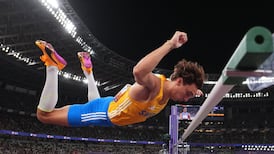TENNIS:The All England Club is moving with the times and this year will utilise the latest technology to bring more clarity to line calls, writes Johnny Watterson
"We're a private club that happens to have a do in the summer," said the All England Club chairman, Tim Phillips, last week.
Wimbledon sometimes likes to give the impression of old-world charm and the sense that, as the world races ahead, they conduct affairs at their own sedate pace. But the championships have always tried to combine tradition with progress, and this year's addition of Hawk-Eye marks another step forward in Wimbledon's ability to accept innovation and technology.
The closing roof is still two championships away.
The brainchild of Paul Hawkins, who came up with the idea when he graduated from university in 1999 with a PhD in artificial intelligence, Hawk-Eye is a multi-camera system that electronically tracks the flight of a tennis ball.
The invention was picked up almost by accident. Hawkins originally pitched his idea to the television company involved in Test cricket. Invited on to the BBC radio programme Test Match Special to briefly explain the uses of Hawk-Eye, Hawkins ended up talking about his machine for over two hours when play was wiped out for the day by rain.
Its potential was then recognised by producers.
While the system has already been used at the US and Australian Opens and has been used as a television aid since 2003, this year will be the first time that players - provided they are playing on Centre Court or Number One Court - can use Hawk-Eye to question umpires' calls through a "Player Challenge System".
Initially, it took a series of high-profile bad calls to push Hawk-Eye into service. At the 2004 US Open quarter-final, Serena Williams was beaten by Jennifer Capriati. But in a controversial last set, three of Williams's strokes were called out when Hawk-Eye television replays showed them to be good. It also revealed a Capriati double fault that was not called against her.
At the US and Australian Opens, players have been permitted two incorrect challenges against line calls in each set. But the All England Club has decided that at Wimbledon this will become three calls in each set, in deference to the importance of serve on grass.
Hawk-Eye is different from the Cyclops electronic eye, which has been used as a service-line judging aid at Wimbledon since 1980.
Now Cyclops will be deployed on the outside courts only.
The reason Hawk-Eye is deployed on only two courts is not because of the price of installation of the 10 cameras required, but because there is nowhere to erect the big screens required to show spectators whether the ball is in or out.
Technical advances at Wimbledon
1971 - Tie-break introduced 1980 - Cyclops introduced
1991 - Radar gun introduced 2007 - Introduction of Hawk-Eye 2009 - Sliding translucent roof
completed
2009 - Centre Court capacity up
from 13,800 to 15,000











